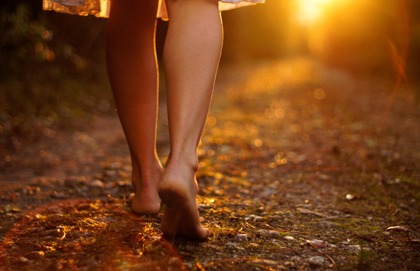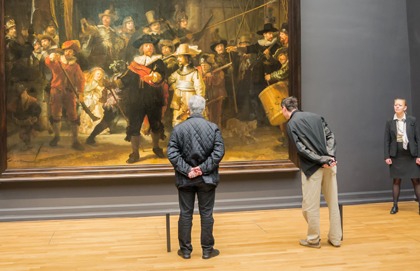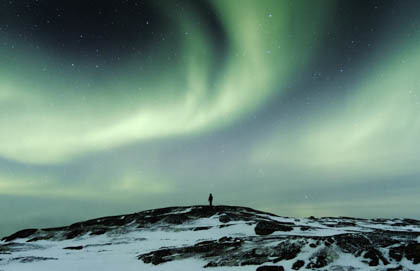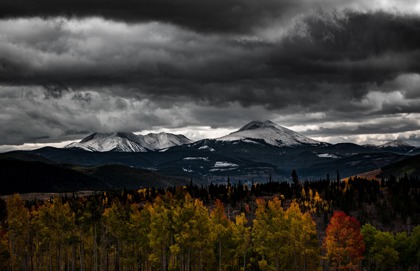As a child who grew up in the Niagara region, the city of Toronto always held an aura of mystery in my imagination. We had the orchards and vineyards, sure, but Toronto was that shimmering mirage of a city you could see across Lake Ontario on clear summer days. It glittered like a jewel in the sun, and at night its thousands of flickering lights danced across the dark waters like beacons from another world.
Of course, once I grew older, visited Toronto and eventually lived there for a year, my fairy tale image of the city all but disappeared. Perhaps such rosy-hued idealism must eventually give way to more realistic views of things, but I still believe that cities can and should be places that arrest us with mystery and expose us to the miraculous as often as possible.
While a skeptic might rightfully say that it's not a matter of what we're looking at so much as it's a matter of how we're looking at it, I'd maintain that there are also real things cities can do — and have done — to foster, rather than stifle, enchantment. But the idea of a city being disenchanted and disenchanting warrants a closer look.
Almost a century ago now, as he wandered through the bustling streets of London, T.S. Eliot wrote: "The nymphs have departed." This line from "The Waste Land," Eliot's "rhythmic grumbling" against modern life speaks to the blasé apathy he believed had infected so many Londoners living under the false assumption that all the mysteries of the natural world could be tidily explained away through reason and science. In addition to this, a rising secularism in Europe was buffering the individual from any belief in a supernatural world; mysteries and miracles were becoming a tough sell.
Eliot's contention, though, is not merely religious or philosophical — at least not entirely. The departure of those spirits of the woods and rivers was also a quite literal comment upon the urban world in which Eliot lived and wrote. The burgeoning metropolises of Paris, London and New York City were expanding into massively complex constructions of steel, iron, concrete and glass that controlled the natural world in ways previously unimaginable. The nymphs, it seems, hadn't merely departed; they'd been sent packing.
In Eliot's time, the metropolis was still a relatively new phenomenon that many were trying to grasp, and one of the recurring observations of the time was that the city was radically reorienting our understanding of the natural world and our interaction with it. The world was not so much a complex system we worked within but a chaotic wilderness we subdued and kept without.
A century later, so many of us have been born into a world where megacities are normative that perhaps we're unaware of how "unnatural" our lives can be. When I moved to Toronto, I lived on the 25th floor of a high-rise apartment complex, commuted via bus and underground rail to the downtown core, where I could climb a staircase that actually brought me right into the building I needed. I could hop on transit for lunch and go to Union Station, where an entire subterranean network of food vendors and shops exists for urban commuters. Most of Toronto's downtown is actually navigable without ever having to step foot outside.
Even outside, though, one walks through a world of gridded street patterns, indifferent to geographical topologies, artificial lamplight dimming the stars, neon signs vying for our attention, and busy roadways not always conducive to pedestrian movement. And as in many areas of the city, there is layer upon layer of concrete, pipework and iron rebar separating us from the topsoil upon which the city was built.
Of course, the city, like most of our technology, buffers us from the world. Just think of socks, for instance. The first thing you do every day is put on your socks and then your feet never actually touch the ground for the rest of the day. Soon they're encased in shoes and remain nicely shielded from the elements until you pull off the shoes, peel off the socks, pick your feet up off the floor and place them back into the bed from which they emerged that morning.
Socks (and the rest of our clothing for that matter) connect us to and disconnect us from the world around us. We might not often think of socks as technology, but if technology is merely the rearrangement of the natural world to create something for human purposes, than socks are as technological as the space shuttle. Each, to varying degrees, mediates our experience of the created world out of which all our technology comes.
But what happens when such buffering is as pervasive as many of our megacities allow it to be? Current statistics indicate that more people now live within megacities such as Toronto than live in small towns or on farms. This is a socio-geographic reality previously unknown in human history, and the repercussions of so many people regularly disconnected from the workings of the natural world are most likely yet unknown. Yet living in the city does not mean one must be so disconnected. If we live in Toronto or Hamilton, we can leave the city and explore the greenbelt and farms that surround it. Or we can increase the incorporation of natural systems into our built environments.
Perhaps these both suggest a naive or romanticized desire to return to some pristine form of rural existence, a pre-technological recovery of that clothes-less (talk about unbuffered) Garden of Eden. In one of the most well-known fictionalized accounts of Eden, Paradise Lost, John Milton truly presents a pre-fallen dwelling that seems to contain the perfect synthesis of natural world and human artifice.
Milton describes Adam and Eve's home in the following lines from Book 4:
Thus talking hand in hand alone they pass'd
On to thir blissful Bower; it was a place
Chos'n by the sovran Planter, when he fram'd
All things to mans delightful use; the roofe
Of thickest covert was inwoven shade
Laurel and Mirtle, and what higher grew
Of firm and fragrant leaf; on either side
Acanthus, and each odorous bushie shrub
Fenc'd up the verdant wall; each beauteous flour,
Their constructed home and the living world are perfectly united here. The dwelling is literally rooted to its place, requiring no death of the natural world in its creation. In fact, their home is more of a den or nest than any human structure. Milton's vision certainly merits some critique in its nostalgic longing for an impossible harmony between human construction and the natural order, but his desire to "use" the world in a way that works "with the grain" of natural processes is a principle many urban planners are increasingly aware of.
Yet as the title of the epic indicates, such a paradise is lost to us — perhaps forever — this side of the Fall. We can't build this way nor, as many might rightfully argue, would we want to. For if the Bible tells us anything about the places we build, it's that we're supposed to move from a garden to a city. Right?
Well, even the city we are moving towards, as it's depicted in Revelation, has the river of life running through it. Some might see this as mere allegory, but I think there is also a very literal suggestion that the places we build and Creation are meant to work together. We aren't meant to pave paradise and put up parking lots, as Joni Mitchell put it; we're to build within paradise and have paradise within our built environment.
I now live in Hamilton, and one of my favourite places to walk is the Sam Lawrence Park. Although small, the park is a wonderful oasis from the noise and bustle of our abysmal four-lane suburban traffic. The park is nestled on the escarpment ledge and looks out over the city of Hamilton and the bay bordering its northwestern edges. The park is encircled by a fieldstone wall and contains a variety of local trees and a wide range of perennial grasses and shrubs. You can sit on the lawns under these trees or walk through the shaded gardens. Perhaps my favourite thing about this small park is that it is often filled with landscapers who prune back the trees and clean the walks, revealing that even these natural cycles of birth and decay require the caring attention of stewards.
Downtown Hamilton, in recent years, has also seen the rise of community gardens. There is one, in the West End, that is particularly interesting since it involved a rather rapid transformation of a relatively useless space into several dozen raised vegetable gardens. This small area of grass that was simply mowed and forgotten about is now a space where downtown Hamiltonians come together to cultivate gardens, raise and harvest small crops, discuss small successes and failures with their neighbours, and even share meals and poetry readings. Again, this is a place where individuals become increasingly aware of the systems of birth, growth, death and rebirth so fundamental to human life.
My Niagara childhood was in the midst of vineyards, orchards and other small-scale agrarian operations. My friends and I would spend hours hiking along the escarpment's Bruce Trail, playing games in the woods near our home, and following creeks and rivers as far as daylight allowed. Although my parents were in no way farmers, for a number of years they tried their hand at raising goats, pigs, cows, chickens and rabbits, and for a few years, we even had a slightly demon-possessed horse. We had a few modest vegetable gardens, where we raised meager crops of beans, tomatoes, lettuce and peppers. But just as a fish is the last to know it's wet, I had little idea how a rural upbringing would be so different from my urban experience.
Living in downtown Ottawa and Toronto and now in the suburbs of Hamilton, I'm repeatedly struck by how buffered I can become to the natural systems I am a part of. Our water comes to us through taps and leaves through drains; food is easily bought from a grocery store and the remains put in plastic bags that are carried away once a week like clockwork. And now, with mobile computing, our hours of work rarely move with the natural rhythms of daylight and seasons.
As embodied creatures so fundamentally dependent upon water, food and light for our existence, the ways in which city life can distance us from these natural systems should concern us. The inclusion of the natural within the artificial is so necessary because it brings us, again and again, into the mysterious and — dare it be said — miraculous forms in which life is transmitted from the natural world to our constructed world, from the Creation to our bodies.
Again, one has to temper the idealism that might gush forth with the ideas of public parks and city gardens since they are only as strong as the individuals and systems that will dedicate the time and energy to caringly maintain them. Yet the benefits of such spaces cannot be underestimated. Of course, the desire to "green" our urban spaces has been on the rise for decades. Yet the reason such green spaces are good for us is much more than aesthetics and even much more than clean air and a way to bring people together — as good as all these things are. Green spaces are also necessary for allowing ourselves to be re-enchanted with the mysteries of life.
Indeed, even a bit of time to reflect upon the natural world can move us beyond it to a realm of enchantment at the inexpressible mysteries and miracles of the gifts of life all around us. As poet and farmer Wendell Berry once wrote:
"Whoever really has considered the lilies of the field or the birds of the air and pondered the improbability of their existence in this warm world within the cold and empty stellar distances will hardly balk at the turning of water into wine — which was, after all, a very small miracle. We forget the greater and still continuing miracle by which water (with soil and sunlight) is turned into grapes."—The Art of the Commonplace:The Agrarian Essays






